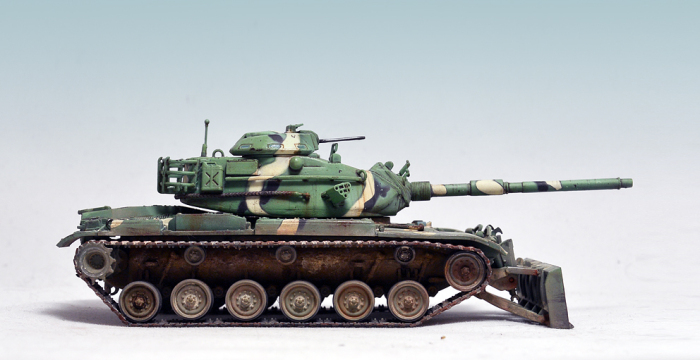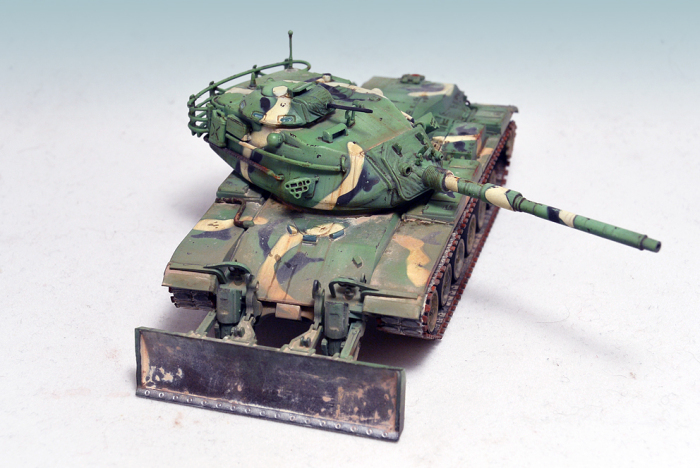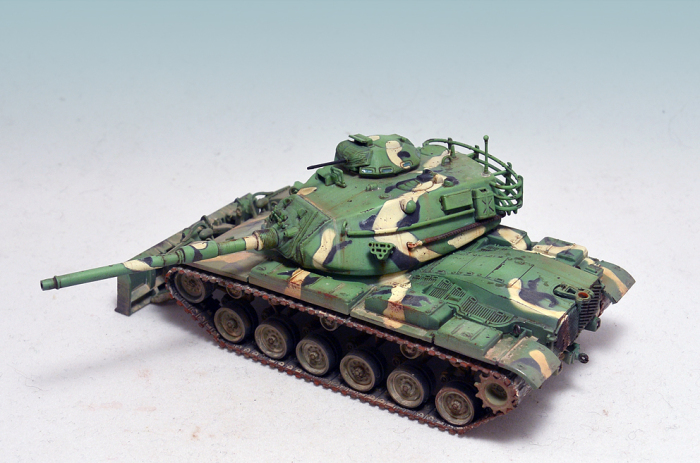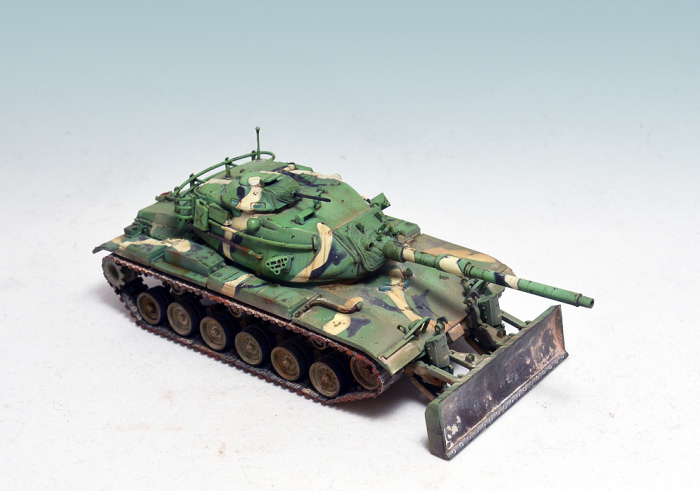M60A3 w/ Dozer Blade
The M60 Patton is a main battle tank (MBT)[2] introduced in December 1960.[3] With the United States Army’s deactivation of their last (M103) heavy tank battalion, the M60 became the Army’s primary tank[4] during the Cold War. Although developed from the M48 Patton, the M60 series was never officially classified as a Patton tank, but as a “product-improved descendant” of the Patton series.[5] On 16 March 1959, the OTCM (Ordnance Technical Committee Minutes) #37002 officially standardized the vehicle as the 105 mm Gun Full Tracked Combat Tank M60.[6]
The M60 was criticized for its high profile and limited cross-country mobility, but proved reliable and underwent many updates over its service life. The interior layout, based on the design of the M48, provided ample room for updates and improvements, extending the vehicle’s service life for over four decades. It was widely used by the U.S. and its Cold War allies, especially those in NATO, and remains in service throughout the world today despite having been superseded by the M1 Abrams in the U.S. military. Egypt is currently the largest operator with 1,716 upgraded M60A3s, Turkey is second with 866 upgraded units in service, and Israel is third with over 700 units of Israeli variants.
M60A3 series
In 1978, work began on the M60A3 variant. It featured a number of technological enhancements, including smoke dischargers, a new flash-lamp pumped ruby-laser based rangefinder (AN/VVG-2) that could be used by both commander and gunner, and an M21 ballistic computer, and a turret stabilization system.
Late production M60A3s omitted the commander’s cupola (Israel Defence Force armor doctrine required tank commanders to fight commander-exposed, and it was discovered that non-penetrating hits upon the vehicle could dislodge the cupola from its mount while the commander was in it). The remote-controlled M85 machinegun was relatively ineffective in the anti-aircraft role for which it was designed compared to a conventional pintle mount. Removing the cupola lowered the vehicle’s relatively high silhouette. The cupola’s hatch also opened toward the rear of the vehicle and was dangerous to close if under small-arms fire owing to an open-locking mechanism that required the user to apply leverage to unlock it prior to closing.
First the picture inspiring the camouflage scheme, a variant of the MERDC cammo.









